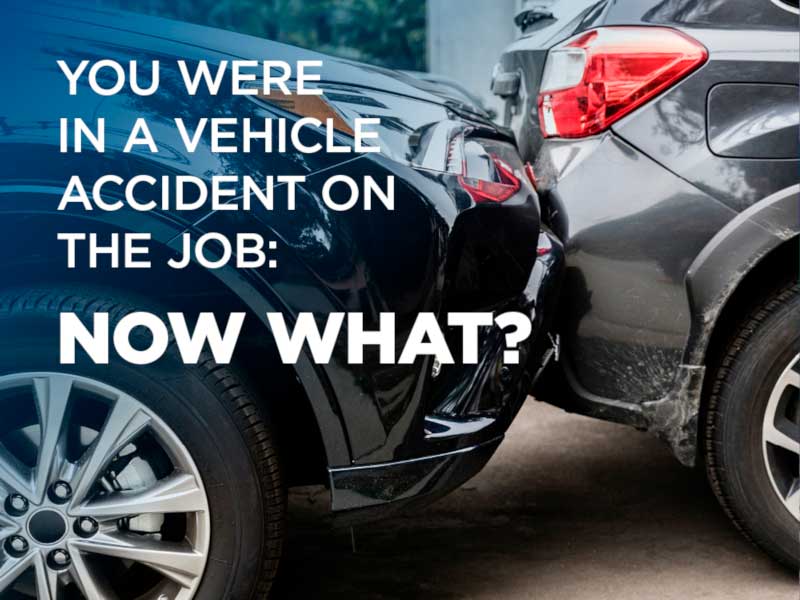- Home
- Loss Control
- Loss Control Insights
- You Were in a Vehicle Accident on the Job. Now What?
Whether a worker travels often or only occasionally while on the job, and whether the vehicle is an 18-wheeler or a small car, being in an accident is a traumatic event.
Regardless if the driver is injured, just shaken up or walks away without a scratch, they may not be thinking clearly in the moments after a crash. That’s why it’s important to ensure all your drivers make proper procedures a top priority. Workers must remember what to do and have the necessary items on hand to respond to an emergency, even if they are rattled by the experience.
According to Kevin Clayton, EMC Engineering Specialist, the knowledge on how to react should be instilled in employees before they ever drive their first mile for your company. He says, “Accidents can be costly for both the driver and your company. To protect your employees, other drivers and your vehicles, develop a system that trains employees to handle a worst-case scenario.”
Post-Accident Procedures
Before setting out on any drive, workers should make sure proper paperwork, such as vehicle registration, licenses and a checklist of post-accident procedures, is in the vehicle. EMC's accident report form gives a good list of details a driver should record as soon as possible after an accident. These details allow the employee to do an initial assessment, which includes these steps:
- Move the vehicle off the road (if possible) to avoid causing additional crashes.
- Perform a body scan to be sure they aren’t injured. If able, check on people from other involved vehicles to make sure they are OK. If the other drivers are fine, trade names, insurance details and contact information.
- Place a 911 call for assistance, including medical help, tow trucks and highway patrol officers.
- Call the office to let management know what happened, along with any details the company may require.
- Take photos with a cell phone or camera, if physically able to. Kevin suggests taking pictures of all vehicles—including their license plates—at the scene. He adds, “Witnesses may not stick around to talk with safety patrol officers, but their testimony may be needed. With photos of license plates, the drivers can be tracked down for an interview later.” He also suggests taking photos or videos of the positions of all vehicles (before moving your vehicle) and any skid marks, landmarks or other important details that may be helpful during an accident investigation.
- Never admit fault when talking with other involved drivers, witnesses and highway safety officers. Kevin recommends employees keep quiet because, “While an employee may suspect they were in the wrong, they don’t know all the facts. Only a trained investigator can decide who was at fault, so be sure your employees don’t say or do anything that may lead the investigator in the wrong direction.”
Commercial Drivers
All commercial drivers have reporting requirements. If the accident involves a fatality, vehicles must be towed, the highway must be shut down or the vehicle is carrying hazardous materials, drug and alcohol testing may be required. Kevin notes that to be prepared for an accident and resulting examinations by accident investigators, CDL drivers must maintain their logs and timecards.
Helpful Resources
- To find details of the necessary situations in which testing is required, review the Electronic Code of Federal Regulations, including Subpart C, Post-accident Testing. Note that you’ll need to scroll to Part 382 to find details.
- Similar information is abbreviated in a chart by the Federal Motor Carrier Safety Administration.
- Company drivers also need to be familiar with DOT Federal Motor Carrier Safety Administration accident register rules. These records must be kept for three years.
Get in touch
Need help? We’re here for you! Whether you have questions or need personalized assistance, your local office is ready to support you.
Loss Control Insights
Stay informed with the latest news and receive actionable safety tips, all carefully curated by our team of experts.
